
- The Architectural Genius Behind the Sagrada Familia: A Closer Look at Gaudí's Vision
- Exploring the Symbolism of the Sagrada Familia: Unveiling Its Hidden Meanings
- Visiting the Sagrada Familia: Tips for Navigating Barcelona's Most Famous Landmark
- The History of the Sagrada Familia: From Construction Beginnings to Modern-Day Marvel
- Sagrada Familia: A Guide to Its Stunning Facade and Intricate Details
- Understanding the Spiritual Significance of the Sagrada Familia: More Than Just a Monument
Barcelona is a city steeped in history and architectural wonders, with one of its most remarkable treasures being the Sagrada Familia. This iconic basilica, designed by the visionary architect Antoni Gaudí, is not only a testament to artistic genius but also a symbol of the city's rich cultural heritage.
In this article, we will explore The Marvelous Sagrada Familia: Barcelona's Iconic Landmark and its Secrets, uncovering the hidden meanings behind its intricate designs and the ongoing journey of its construction. Join us as we delve into the fascinating story of this UNESCO World Heritage Site and its place in the heart of Barcelona.
The Architectural Genius Behind the Sagrada Familia: A Closer Look at Gaudí's Vision
Antoni Gaudí's vision for the Sagrada Familia was not just architectural; it was a profound expression of his deep spirituality and connection to nature. He believed that architecture should emulate the forms and patterns found in the natural world. This philosophy is evident in the basilica's organic shapes, which reflect elements like trees, flowers, and even the human body, creating a mystical experience for visitors.
One of the most fascinating aspects of Gaudí's work is his innovative use of geometry. He employed hyperboloid structures, parabolic arches, and intricate vaults to create a sense of movement and light. By integrating light as a key component in his designs, Gaudí was able to dramatize the interplay between shadows and illumination within the basilica, enhancing its spiritual ambiance. The use of colors through stained glass further accentuates this effect, inviting a divine presence into the sacred space.
Gaudí's meticulous attention to detail can be observed in the symbolic elements incorporated throughout the structure. For instance, he designed the Nativity Facade to represent the birth of Jesus, adorned with figures of flora and fauna, while the Passion Facade depicts the suffering of Christ with stark, angular forms. This duality serves to convey the full spectrum of the Christian narrative:
- Nativity Facade: Joyful, intricate designs celebrating birth.
- Passion Facade: Harsh, dramatic lines illustrating sacrifice.
In addition to his creative genius, Gaudí's engineering skills were revolutionary for his time. He utilized a combination of traditional techniques and innovative materials, ensuring that the Sagrada Familia would withstand the test of time. His approach not only paved the way for modern architecture but also established a unique identity for Barcelona, making the Sagrada Familia a living testament to his extraordinary legacy.
The Sagrada Familia is not merely an architectural marvel; it is a profound canvas of symbolism that reflects the spiritual journey of Christianity. Each element in Gaudí’s design carries deep meaning, allowing visitors to engage with the sacred narrative on multiple levels. For example, the three grand facades—Nativity, Passion, and Glory—represent distinct aspects of Christ’s life, inviting contemplation and reverence.
One striking feature of the basilica is its use of nature-inspired motifs. Gaudí believed that the divine could be found in the natural world, and this philosophy is evident in the intricate sculptures and carvings that adorn the structure. Elements such as trees and flowers symbolize growth and renewal, while animals evoke a sense of harmony with creation. This integration of nature serves as a reminder of humanity’s connection to the divine.
The interior of the Sagrada Familia is equally symbolic. Light plays a crucial role in conveying Gaudí’s vision, as the stained glass windows filter sunlight into a spectrum of colors, creating a heavenly atmosphere. Each hue is purposefully chosen to enhance the spiritual experience, reflecting various themes such as hope, redemption, and divine presence. This interplay between light and architecture invites visitors to experience a sense of transcendence.
In summary, the Sagrada Familia is a rich tapestry of symbolism that invites exploration and introspection. Through its architectural elements, nature motifs, and the transformative power of light, Gaudí has crafted a space that not only honors the Christian faith but also encourages a deeper understanding of our relationship with the universe. This iconic landmark continues to inspire awe and wonder, revealing the mysteries of faith and creation.
Visiting the Sagrada Familia can be an unforgettable experience, but planning ahead is essential to make the most of your visit. To enhance your journey through this architectural masterpiece, consider the following tips:
- Buy Tickets Online: Avoid long queues by purchasing your tickets in advance through the official website.
- Visit Early or Late: The basilica tends to be less crowded early in the morning or later in the afternoon, allowing for a more peaceful experience.
- Guided Tours: Opt for a guided tour to gain insights into the intricate details and history that define the Sagrada Familia.
- Allocate Time: Plan to spend at least two hours exploring both the interior and exterior of the basilica to appreciate its beauty fully.
Another essential tip is to check the weather before your visit. The Sagrada Familia's stunning stained glass windows are best appreciated when sunlight filters through them, creating a vibrant array of colors inside. You may also consider the following options to enhance your visit:
| Time of Day | Lighting Effect | Recommended Activity |
|---|---|---|
| Morning | Soft, warm light | Explore the Nativity Facade. |
| Afternoon | Bright colors from stained glass | Enjoy the interior atmosphere. |
| Evening | Golden hour glow | Take stunning photos outside. |
Lastly, don’t forget to explore the surrounding area. The Sagrada Familia is located near other fascinating sites, such as the Park Güell and Casa Batlló, which showcase Gaudí's other remarkable works. Combining these visits will provide a richer understanding of Barcelona's architectural landscape.
The History of the Sagrada Familia: From Construction Beginnings to Modern-Day Marvel
The history of the Sagrada Familia dates back to 1882 when construction officially began under the direction of architect Francisco de Paula del Villar. However, it was Antoni Gaudí who took over the project in 1883, drastically transforming its design. His innovative vision combined Gothic and Art Nouveau styles, setting the foundation for what would become an extraordinary architectural masterpiece. The basilica's construction has continued for over a century, with an estimated completion date set for 2026, marking the centenary of Gaudí's death.
Throughout its construction, the Sagrada Familia has faced numerous challenges, including the Spanish Civil War, which halted progress and resulted in the destruction of many original plans and models. Despite these setbacks, dedicated architects and craftsmen have continued Gaudí's work, utilizing modern technology to interpret his vision. Today, the basilica stands not only as a religious site but as a symbol of resilience and innovation, captivating millions of visitors from around the globe.
The Sagrada Familia's design is a continuous dialogue between the past and the present, with contemporary architects striving to maintain the integrity of Gaudí's original ideas while adapting to modern construction techniques. This blend of historic and current methods reflects a commitment to preserving the artistic and cultural significance of the monument. As a UNESCO World Heritage Site, the Sagrada Familia is recognized not only for its architectural brilliance but also for its role in the identity of Barcelona.
As visitors explore the Sagrada Familia today, they encounter a living work of art that evolves alongside the city itself. The ongoing construction serves as a reminder that the basilica is more than just a landmark; it is a symbol of hope, faith, and human creativity. Each stone laid and every detail crafted contributes to the narrative of a project that continues to inspire awe and admiration, making it a true marvel of Barcelona.
Sagrada Familia: A Guide to Its Stunning Facade and Intricate Details
The Sagrada Familia's facade is a breathtaking illustration of Gaudí's artistic vision, showcasing intricate details that reflect his deep faith and connection to nature. The façades are divided into three distinct parts: the Nativity, Passion, and Glory. Each facade tells a different part of the Christian story, enveloping visitors in a narrative that blends architectural beauty with spiritual symbolism.
One of the most captivating features of the Nativity Facade is its elaborate sculptures representing various elements of life. Here, you'll find figures of animals, plants, and biblical scenes that create a sense of joy and celebration. In contrast, the Passion Facade employs a more stark and angular design, emphasizing the suffering of Christ. This juxtaposition of styles highlights the duality of life and faith, inviting visitors to reflect on profound themes as they explore the basilica.
Moreover, the intricacies of the Sagrada Familia extend to its towers, which symbolize different aspects of the Christian faith. The tallest tower, dedicated to Jesus, will reach a height of 172.5 meters upon completion. The remaining towers represent the Virgin Mary and the apostles, each adorned with unique details that further enrich the overall narrative of the structure. The combination of geometry and natural motifs throughout these towers emphasizes Gaudí's innovative approach to religious architecture.
As you admire the facade, pay attention to the play of light throughout the day. The way the sun interacts with the stone and stained glass creates a dynamic atmosphere that transforms the basilica's appearance. This magical interplay of light not only enhances the beauty of the Sagrada Familia but also reinforces Gaudí's belief that architecture should be a reflection of the divine, making it a truly immersive experience for all who visit.
Understanding the Spiritual Significance of the Sagrada Familia: More Than Just a Monument
The Sagrada Familia stands as a beacon of spirituality in Barcelona, transcending its role as merely an architectural landmark. It embodies a deep connection to faith and serves as a visual narrative of the Christian story. Gaudí infused each aspect of the basilica with meaning, inviting visitors to engage with the divine through its intricate designs and profound symbolism. This is not just a monument; it is a living testament to the spiritual journey that reflects the essence of Christianity.
At the heart of the Sagrada Familia’s design lies a commitment to nature's beauty, which Gaudí believed was a manifestation of the divine. The organic shapes and forms throughout the basilica echo the natural world, creating an atmosphere where visitors can experience a sense of tranquility and connection. Elements such as trees and flowers symbolize growth, while the play of light through stained glass nourishes the soul, allowing a deeper appreciation of the divine presence within the space.
Moreover, the Sagrada Familia's architectural elements serve as a profound reminder of the interconnectedness of life and spirituality. The three grand facades—Nativity, Passion, and Glory—each present different facets of Christ’s life, encouraging visitors to reflect on their own spiritual journeys. This intricate relationship between architecture and faith invites a transformative experience, fostering a deeper understanding of the mysteries of existence:
- Nativity Facade: Celebrates the joy of birth and new beginnings.
- Passion Facade: Conveys the solemnity of sacrifice and redemption.
- Glory Facade: Represents the divine promise of eternal life.
Ultimately, the Sagrada Familia is a celebration of faith expressed through art and architecture. It stands as a reminder that spirituality can be found in the beauty of creation, inviting all who enter to embark on a personal journey of reflection and discovery. As visitors explore this unique landmark, they are encouraged to look beyond its physical grandeur and embrace the spiritual significance that makes it a true marvel of Barcelona.
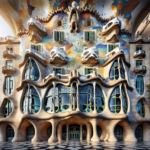 Casa Batlló: Which Ticket?
Casa Batlló: Which Ticket?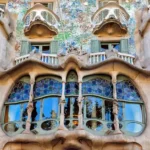 Explore Casa Batlló: Must-See Entries for 40-60-Year-Olds in Barcelona
Explore Casa Batlló: Must-See Entries for 40-60-Year-Olds in Barcelona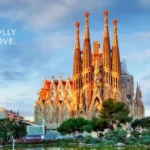 Exploring the Marvels of Sagrada Familia: Barcelona's Architectural Gem from the Inside | A Comprehensive Guide
Exploring the Marvels of Sagrada Familia: Barcelona's Architectural Gem from the Inside | A Comprehensive Guide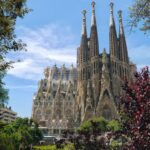 Discover the Complete Sagrada Familia: Barcelona's Architectural Masterpiece
Discover the Complete Sagrada Familia: Barcelona's Architectural MasterpieceIf you want to know other articles similar to The Marvelous Sagrada Familia: Barcelona's Iconic Landmark and its Secrets you can visit the category Sagrada Familia.
Deja una respuesta

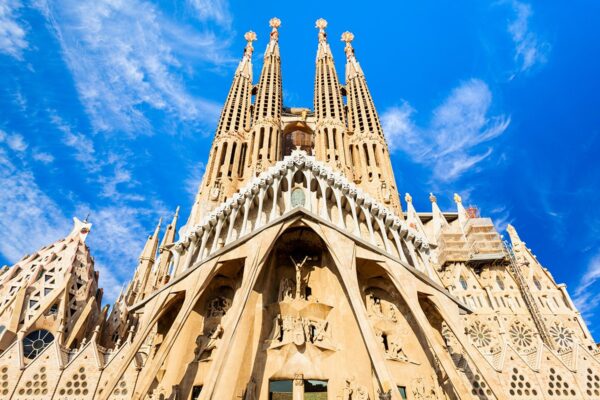
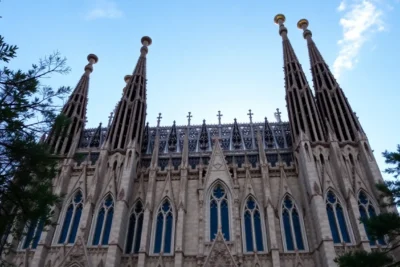
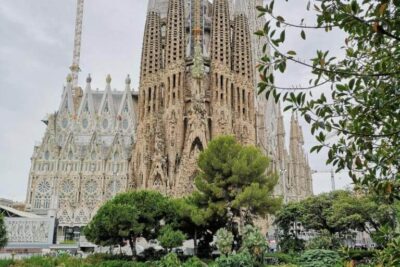
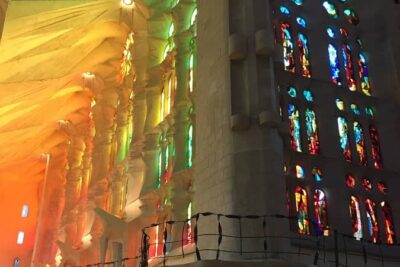
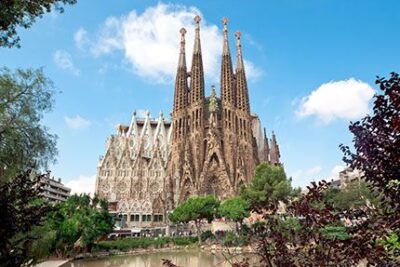
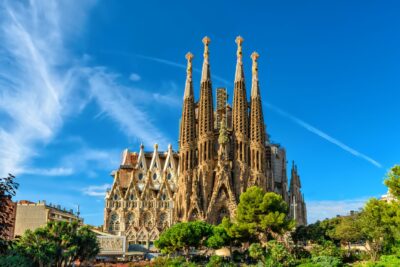
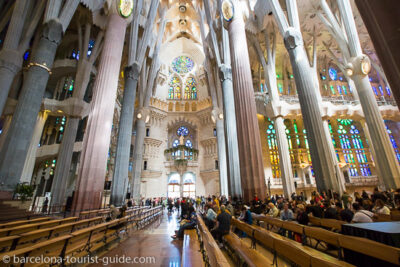
Read more!